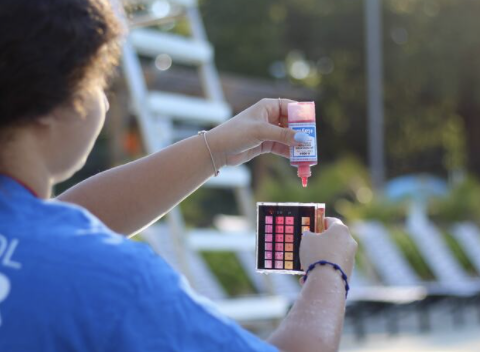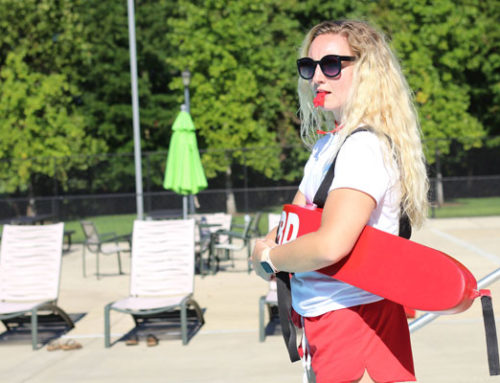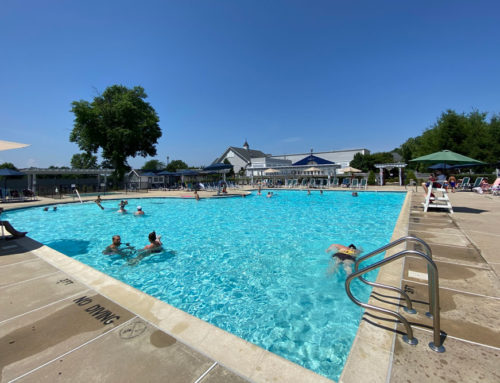
Ah, good old chlorine. When it comes to swimming pool sanitation, it’s the go-to, tried-and-true method. How hard can it be to chlorinate your pool water, after all? But you don’t need to be a chemist to know this is a potentially dangerous way to think about sanitizing your pool.
When testing the water to check your chlorine levels, not all chlorine types are the same. Knowing the difference and doing the proper tests can make or break your swim’s quality, and your guests’ health.
What is free chlorine?
The easiest way to define free chlorine is as the amount of chlorine within your swimming pool that’s ready to disinfect your water. When a chlorine-based sanitizing product dissolves in water, it breaks down into a hypochlorous acid (HClO). Hypochlorous acid is a great sanitizer because:
- It’s nowhere near acidic enough to cause damage to our bodies, and our pool equipment
- It kills tons of recreational water illnesses (RWIs)
What is combined chlorine?
Combined chlorine is what’s created when chlorine bonds to contaminants during the disinfection process. This means that if combined chlorine is found in your pool, then so are contaminants.
Why does it matter?
When you add free and combined chlorine together, it gives you the total chlorine count. But total chlorine is kind of a sneaky misnomer — what’s in a name isn’t always reality. That’s because calculating your total chlorine alone simply isn’t an effective method of testing your swimming pool’s water quality.
In order for your disinfection to be effective, your free chlorine levels must remain higher than your combined chlorine levels. However, free chlorine concentration decreases as combined chlorine concentration increases.
So, the more combined chlorine you have, the less free chlorine there is available to actually disinfect your pool. This is why calculating total chlorine alone is useless — you actually have no idea whether your pool is clean or not. It’s also a reason to constantly monitor your pool’s chemistry levels and adjust them as needed, to maximize bather safety.
Is that all?
Unfortunately, no. Combined chlorine also imposes an increased threat of disinfection byproducts (DBPs). These are different from contaminants, but are often a threat to swimmers’ health. According to a 2020 Polish study, some of these byproducts are known Trihalomethanes, cancer-causing chemicals that include chloroform and bromoform.
The Centers for Disease Control and Prevention, and the Environmental Protection Agency do say the risk of recreational water illnesses far outweighs the risk of carcinogens in chlorinated water. However, they also acknowledge that a high combined chlorine count leads to higher concentrations of Trihalomethanes.
The amount and type of DBPs (disinfection byproducts) can depend on a number of other factors, including:
- The type of pollution introduced (sweat, bacteria, organic matter, etc.)
- The intensity of bathers’s swimming
- Your swimming pool’s circulation flow
- The number of complete filtration cycles per day
- Construction (capacity, water surface area, materials, etc.)
Free chlorine vs. combined chlorine: What you can do to protect your pool
Before combined chlorine reaches unhealthy levels in your pool, a pool professional will know what to do to destroy it and make sure your swimmers continue to enjoy a safe and healthy swim! A trained pool professional will do the work to achieve breakpoint chlorination, a process that destroys combined chlorine in the pool.
You should always consult your pool professional to understand the best practices it takes to ensure combined chlorine is kept to a minimum within your pool. But the most basic thing you can do is to measure your pool’s sanitation ability by its free chlorine count, not it’s total chlorine count. However, this is easier said than done.
Manually testing and adjusting water quality is a biased undertaking. Depending on when and where you’re measuring your water chemistry, those readings may vary greatly. Some areas of your pool, especially those farthest away from your circulation system, are more likely to be “dead zones” — where water isn’t circulated as well, and thus is less sanitized.
There have been amazing advances in pool automation over the last few years. Automating your water quality monitoring and chemistry adjustments has never been easier, nor more effective.
That’s why we are so excited about Aquatics Vision. For one, it’s a smart pool system that can automate anything and everything about your pool (from chemistry to pump pressure to lighting controls). But it’s also one of the only swimming pool automation systems to measure and display free chlorine readings in real time. Best of all, you will always have a readout of all your pool’s historical chemistry data — 24/7/365.

So the next time you think that all chlorine is created equal, consider how vast — and potentially serious — the difference between free and combined chlorine actually is. Knowing the difference means a safer, better swim for everyone.





